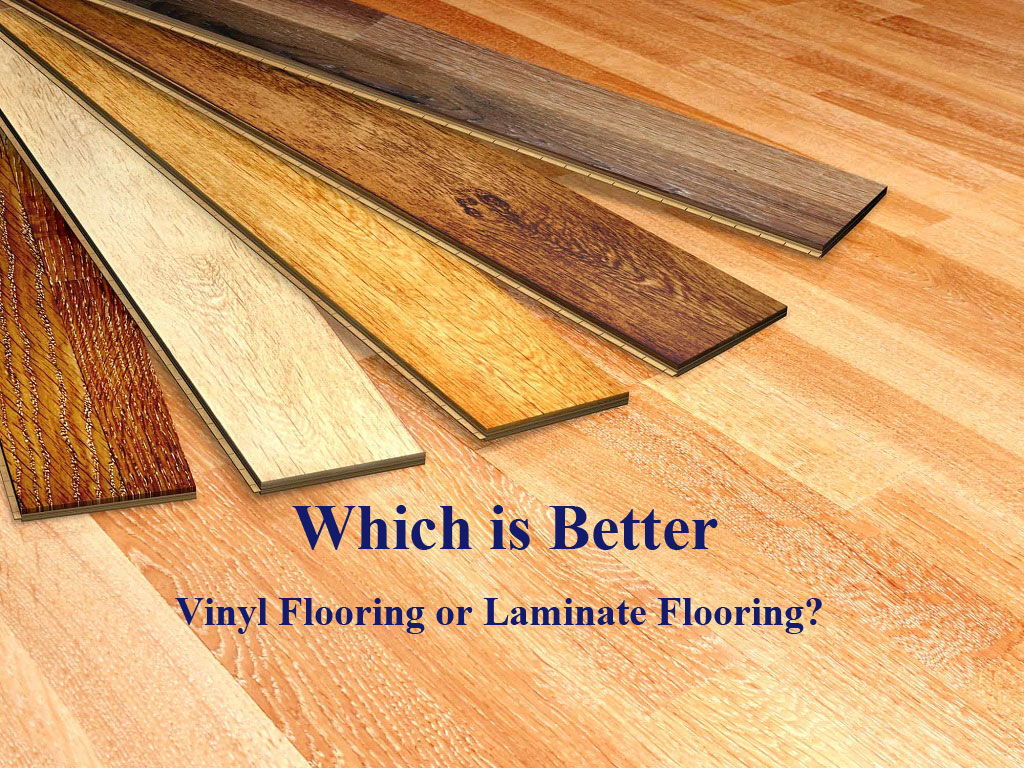Running carpet all throughout your home is not a very good idea if you’re looking to get a certain aesthetic. The other options you have are vinyl flooring or laminate flooring.
But which one is the better choice?
Well, they both have their own pros and cons, depending on what you’re looking for, both aesthetically and in terms of practicality.
To make it easier for you, we have compared the two floorings further down so you know which is your best choice.
What Are Vinyl and Laminate Flooring
We’re going to briefly cover some of the major differences between vinyl and laminate flooring before going into detail and letting you know which one we think is the best, depending on what you’re looking for.
Vinyl Flooring
- Vinyl is made up of 100% synthetic material, with the base layer usually fiberglass which is then coated in PVC vinyl and plasticizer.
- This sheet is then printed and embossed with a print player that features any sort of pattern or imagery you can think of.
- A layer of no-wax polyurethane is also added.
- The flooring tends to come in planks or tiles which can be placed side by side so that you can get the look you desire, featuring a thickness that ranges from 1mm to 6mm depending on the quality of the vinyl flooring.
Laminate Flooring
- The way you add laminate to your home is the same way you would vinyl to your home, except the key difference is that it is made primarily from wood – which is usually bonded together with resin.
- Featuring a hard surface as well as a transparent plastic Polytetrafluoroethylene sheet layer that goes over the printed design underneath it.
- Laminate is also much thicker than vinyl, ranging from anyway between 5mm to 14mm.
Key Takeaways
Vinyl is made up of 100% plastic in comparison to laminate which is made up of 99% wood products which helps to give it a much more natural look than anything vinyl can offer.
Because of its design featuring 100% plastic, vinyl also has a great residence to moisture than laminate does, so it would be ideal to use this material in damp areas in the home, such as a bathroom.
Though if you’re looking for something that helps keep the heat and is also comfortable to walk on, because of its thickness, laminate is far superior at this than vinyl.
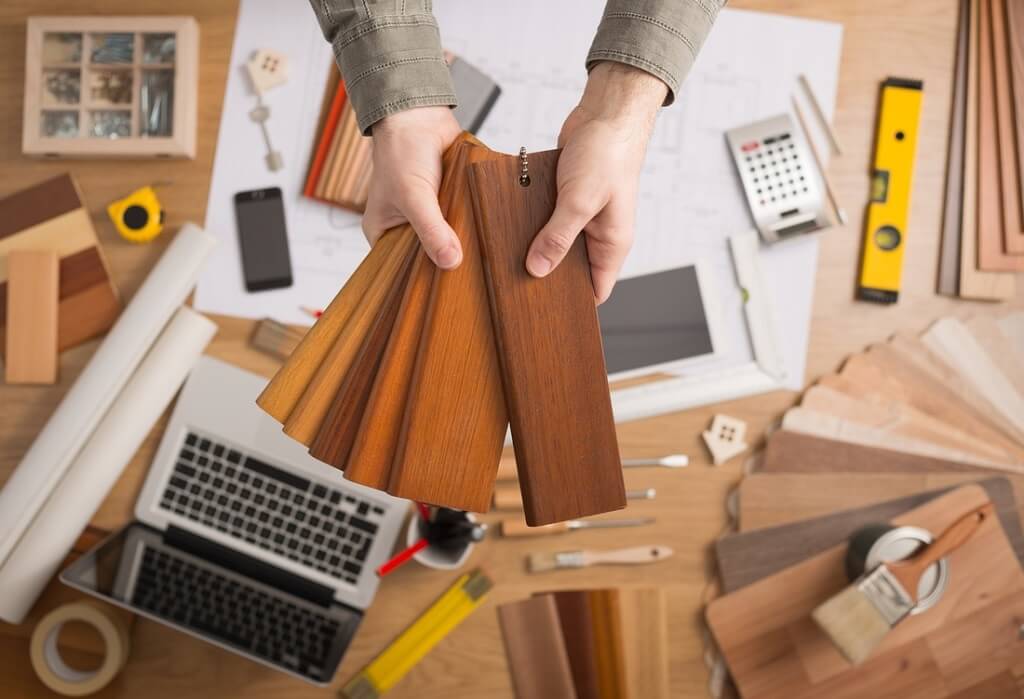
Difference Between Vinyl and Laminate Flooring
Now that you know what each flooring is made up of, and how easily they can be added to any room in your home – as well as the rooms they would work best in.
We want to compare them side by side on some aspects that you should be thinking about when it comes to choosing the right flooring for you; things like appearance, resistance to the elements, and how easy they are to clean.
1. Appearance
Vinyl Flooring
- Your choice of design with vinyl flooring is essentially unlimited since you can have any design or image printed to give you any kind of looking you desire.
- You can even find vinyl which is embroidered to give you a more realistic feel when it comes to adding flooring that looks like hardwood, stone, or other natural materials.
Laminate Flooring
- Due to the way laminate is made, as we’ve already discussed, it can offer you a deeply realistic look with natural embossing which includes an accurate image of the material which it is trying to portray.
The Winner: Laminate
Personally, we believe that laminate trumps vinyl flooring when it comes to appearance as the natural look is far more convincing since it generally is made out of wood.
Though this is only apparent if you’re looking to feature natural-looking flooring in your home.
If you’re wanting to add an unnatural design to your bathroom or bedroom area, then vinyl flooring is going to be the best choice for you as laminate flooring can simply not achieve this.
2. Resistance to The Elements
Vinyl Flooring
- Knowing that vinyl is made up of 100% polymer materials, vinyl flooring can be intentionally submerged in water for long periods of time without suffering any long-term damage.
- What this means for your home is that you are able to place it in damp areas, such as a bathroom, without suffering the consequences of a ruined floor or bacteria build-up due to it being wet for too long.
Laminate Flooring
- Laminate flooring, due to the core design of this product being 99% wood, can very easily soften and swell if exposed to water for too long.
- Once it’s dried, the boards will not transform back to their original dimensions afterward, though the change is potentially less than one millimeter, which might seem irrelevant, it can seriously matter as the planks fit like jigsaw pieces.
- And if it’s off by a small amount it can really mess with the design and practicality of the floor.
- Properly fitted flooring can tolerate water for a short period of time, say if you needed to clean it with a mop and bucket – this would be absolutely fine if you left windows open to increase the time it takes for the flooring to dry.
- But generally, it’s a bad idea to fit laminate in a bathroom where water can be around for a long time.
Winner: Vinyl Flooring
Vinyl flooring will always trump laminate flooring when it comes to water resistance, due to the materials it has been made from.
For places like bathrooms and basements, generally damp areas of the home, your only real choice is vinyl.
3. Cleaning & Maintenance
Vinyl Flooring
- One of the best features of vinyl flooring, compared to anything else you can put in your home, is that it is easy to take care of.
- It can be cleaned with a wet mop, hoovered, and scrubbed with many home solutions without any signs of damage.
Laminate Flooring
- As we already know, laminate doesn’t hold up to well when it gets wet, although you can still clean it with a damp mop – but make sure the mop isn’t soaking wet as it could take the floor to long to dry, and then you could potentially ruin the laminate flooring.
- As we’ve suggested already, opening up windows throughout the home will help speed up the time it takes for the floor to dry.
Winner: Vinyl Flooring
The obvious winner here is vinyl flooring since you can essentially clean it any way you would like to and it will not suffer any form of damage.
Which is Better for Home Space
1. For The Bathroom
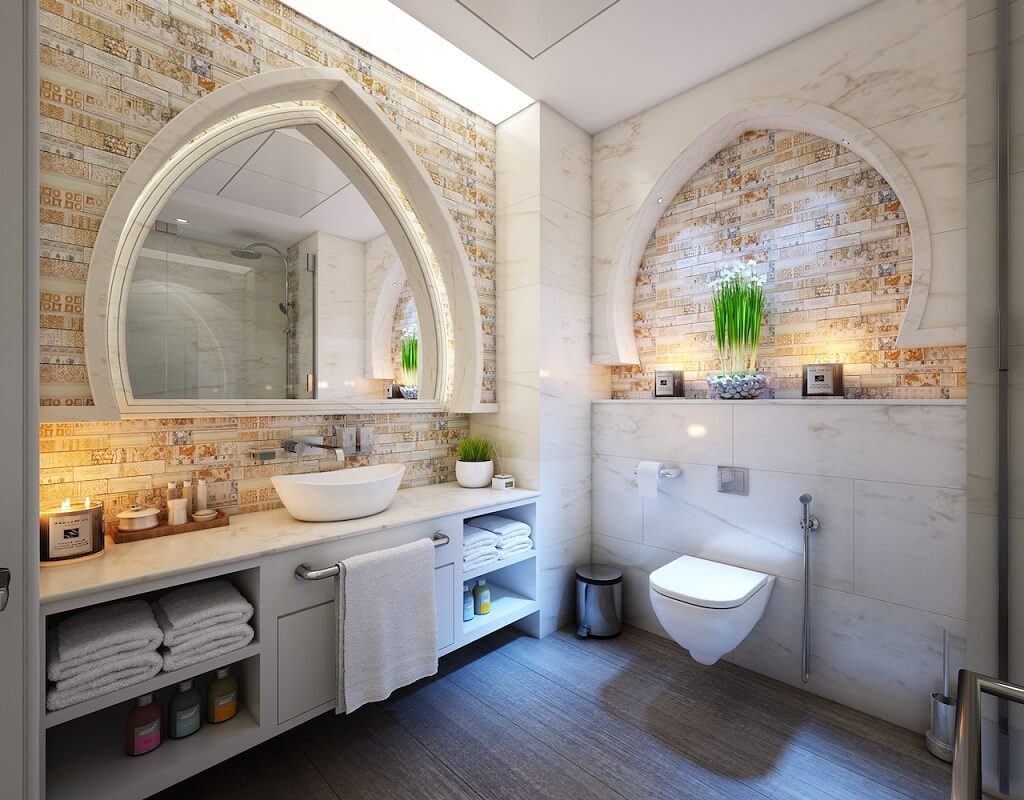
When one is updating their bathroom, the floor coverings are usually a top priority, if one has to choose between laminate and vinyl flooring, then the ultimate choice should be the latter. Vinyl flooring is made of a 100-percent synthetic material that is ideal for bathroom flooring.
The vinyl tiles have fiberglass on their base area which is then coated with a plasticizer and PVC vinyl. Vinyl flooring is water-resistant and will last longer than other floorings since they do not rot from exposure to moisture.
2. For The Kitchen
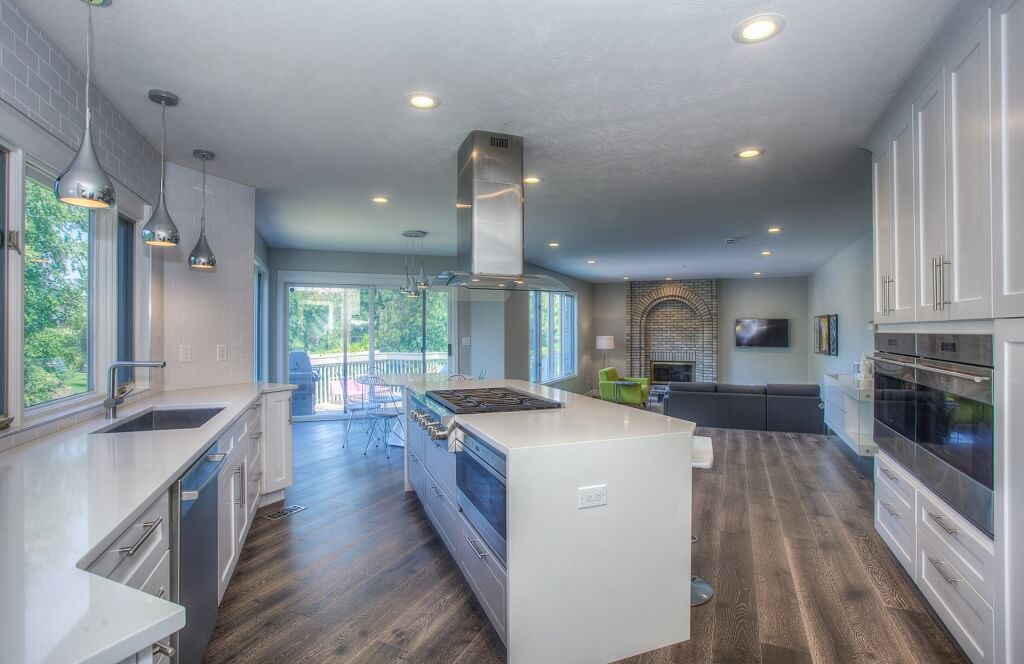
One thing we all know is that the kitchen is one of the most-used room spaces in a house. Its flooring needs to be tough to handle daily activities which may cause wear and tear. Spilled food, Grease splatters, and melting ice cubes are some of the daily occurrences these floors need to cope with.
Vinyl flooring is the best choice for a kitchen floor, it’s easy to clean and maintain. You can use a steam mop or a simple mop to clean. Since vinyl floors are waterproof, you can use water to clean the kitchen floor.
Vinyl flooring will last for a long time and will handle all the activities that are carried out in a kitchen.
3. For The Dining Room
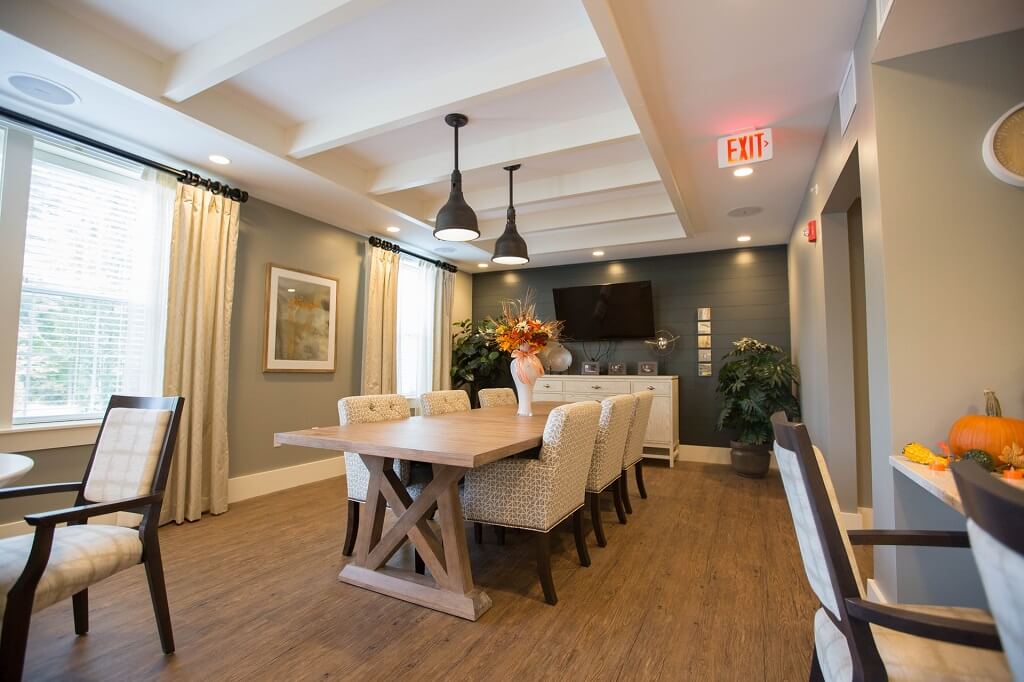
When choosing a dining room floor, you should consider how well you use the space. Someone use it quite often and others just use it for special occasions. One should choose the dining room flooring carefully because it’s an area that will be regularly used.
For a dining room, laminate flooring is the best choice. This is because:
- Simply a cost-efficient method of bringing the wood effect into the dining room space.
- Looks beautiful against the wooden furniture of the dining room such as the dining table.
- Stain-resistant and easy to clean.
4. For The Living Room
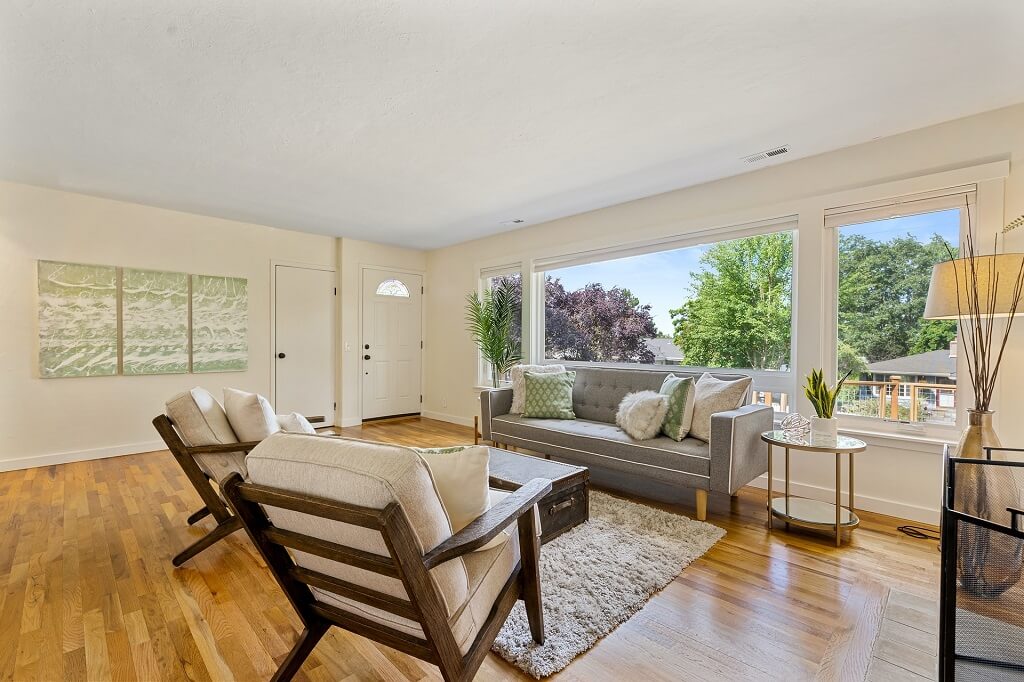
Living room floors have long been known to be made of hardwood flooring. However, the cost of installing wooden floors in the living room can get too high. This is what makes vinyl flooring an ideal solution for living rooms.
Here are the major reasons why vinyl flooring is ideal for living rooms:
- It provides a beautiful and affordable alternative.
- It is more comfortable and softer to the underfoot as compared to laminate.
- It is easy to install.
- It is easy to clean and maintain.
- It is stain and scratch-resistant.
5. For The Bedroom
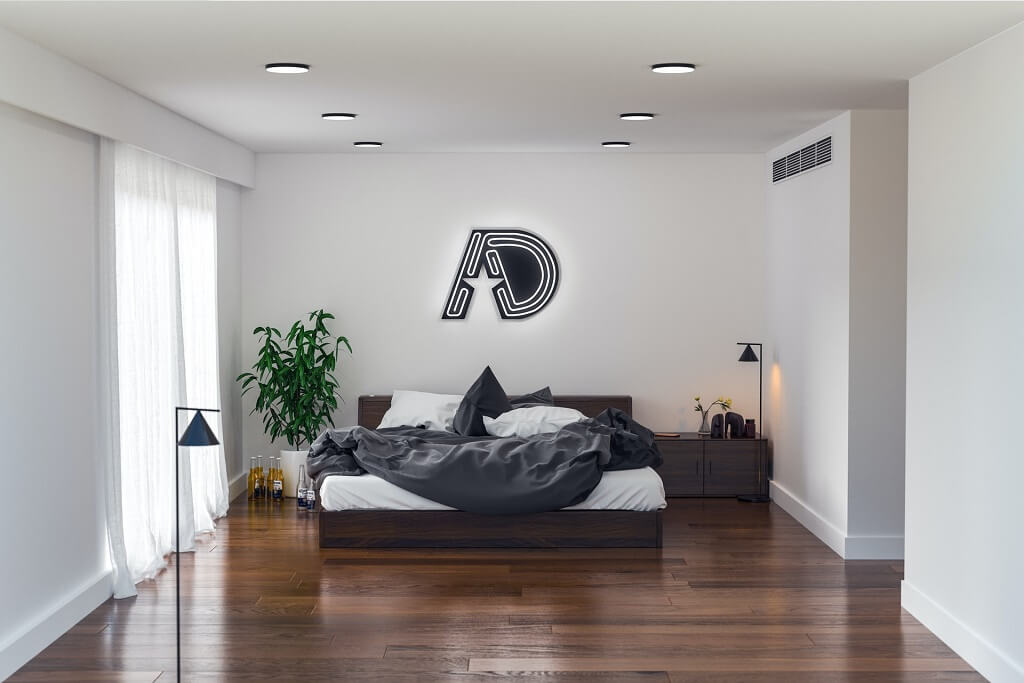
When making a decision on what kind of flooring to install in the bedroom, you need to know the options available depending on the budget and your personal taste.
The attractively affordable vinyl flooring is easy to install, clean, and maintain, which makes it an ideal solution for a bedroom floor.
Conclusion
Due to the designs of vinyl flooring, you could potentially place it all throughout the home thanks to its moisture resistance design making it a perfect choice even in places like a bathroom.
With essentially an unlimited amount of designs available you can have something different going on in every room in the home.
Though, if you’re looking for a more natural design, then laminate flooring is the obvious choice except in rooms such as a bathroom where you’re going to want vinyl moisture-resistant features.

